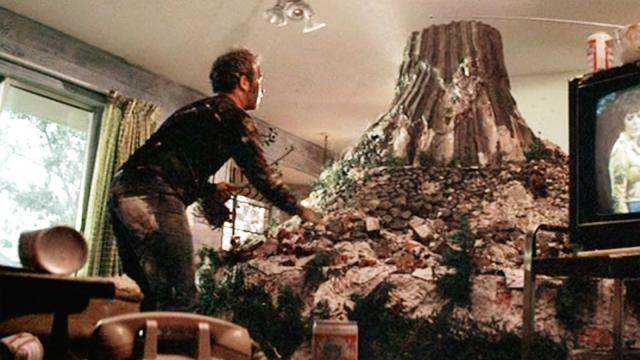It sounds like the plot of a winter blockbuster, but the United Arab Emirates is apparently quite serious about building a mountain to increase rainfall in the region. Would it work? Probably. But instead of launching an infrastructure project where a very rich country attempts to dig its way out of a drought, the UAE needs to get serious about conserving its water.
The science behind a rain-making mountain is not that outlandish. Moist air arriving on ocean breezes would be trapped by the human-sculpted landform, forcing it up into the atmosphere where it would cool, condense into clouds and eventually — hopefully! — fall as rain. This is the phenomenon known as a rain shadow, where one side of a mountainous area sees more precipitation (and the other side sees less).
Right now, a team of atmospheric scientists are determining the feasibility of such an undertaking. The University Corporation for Atmospheric Research (UCAR) and National Center for Atmospheric Research (NCAR) — both legit organisations — are advising on the project, which is in the “detailed modelling” phase. Of course, that means the team could decide that it’s still not a great idea. And let’s hope they do.
There’s no disputing the fact that a large swath of the Middle East is in the midst of a water crisis. A recent report predicted that parts of the region will be uninhabitable by 2050 due to extreme heat exacerbated by climate change, so the problem is likely only going to get worse. But this seems like the wrong way to go about solving that problem, especially when the UAE hasn’t done much to urge its residents to use less water. In fact, these figures from the International Business Times are quite troubling:
The average UAE resident uses an estimated 550 litres of water daily compared to the international average of 170 to 300 litres a day, according to the Federal Water and Electricity Authority.
According to a report by the Al Jazeera Centre for Studies, water demand in the region has risen by a whopping 140 per cent where resources are “already diminishing due to droughts, low rainfall and the prevalent climate.”
Five hundred and fifty litres per person per day is an amount that is astronomically high. In California, where Governor Jerry Brown issued strict conservation measures in 2015, nearly every district was able to cut its water to far below that number. After one year, the entire state was using 23.9 per cent less water than the year before.
The UAE isn’t known for scrimping on infrastructure. It’s got the tallest building in the world (for now) and a harbour filled with artificial islands in the shape of a palm tree. Plus, it’s got a penchant for introducing flashy, financially questionable solutions for civic problems — remember the jet-pack firefighters? Building a mountain to solve a drought doesn’t make a lot of sense, but it does fit the UAE’s brand. I’m sure it will make a great tourist attraction when it’s not cranking out torrential rainfall (which, to be honest, will be most of the time).
But that’s the most messed up thing about this. Mountain-erecting — like its little brother, cloud-seeding — is not only an expensive temporary fix for a bigger problem, it’s also not a sure thing. When the situation gets worse, what happens then? Build another mountain?
There’s really only one get-wet-quick scheme that’s proven to work. Stop using so much water.
Top: Rendering not to scale. Image: Close Encounters
